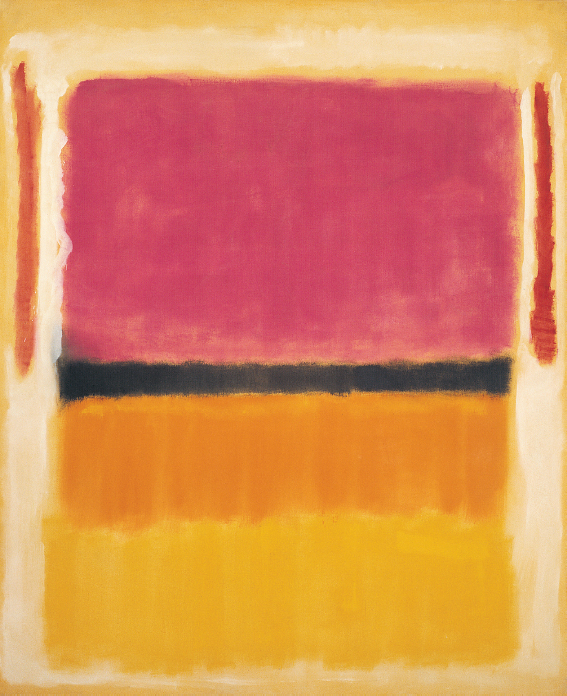György Ligeti (1923–2006)

Violet, Black, Orange, Yellow on White and Red, by the American painter Mark Rothko (1903–1970). The overwhelming yet placid sheets of color merging into one another recall the musical technique in compositions such as Ligeti’s Lux aeterna. Mark Rothko, Untitled (Violet, Black, Orange, Yellow on White and Red), 1949, Oil on canvas, 81 1/2 × 66 inches (207 × 167.6 cm), Solomon R. Guggenheim Museum, New York, Gift, Elaine and Werner Dannheisser and The Dannheisser Foundation, 78.2461.© 1998 Kath Rothko Prizel & Christopher Rothko/Artists Rights Society (ARS) New York.
György Ligeti studied at the Budapest Academy of Music and as a young man was appointed professor there. Unable to pursue his unique sound visions under the Communist restrictions prevailing in Hungary, he left for the West in 1956. Ligeti was past thirty before his advanced music became known.
Ligeti exemplifies both the search for new sonorities that occupied the postwar avant-garde and their new attitudes toward time. Some of his music uses no clear pitches or chords; or, more accurately, while he may start with pitches and chords, he soon adds so many more pitches that all sense of consonance, dissonance, and even the quality of pitch itself is lost. What remain are “sound complexes” that slowly change with time, blocks of sound that can be experienced better than they can be described.
In the time dimension, there is no discernible meter or distinct rhythm. Rather, there is a sense of gradual, almost glacial surging of the sound complexes, followed by a sense of receding — all the while revealing diverse new tone colors.
